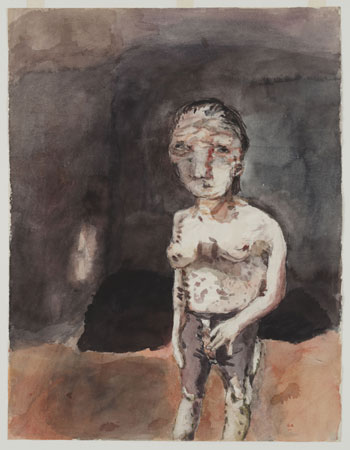The early pictures of Georg Baselitz are aggressively sour and idiosyncratic, executed in livid hues the colours of a gangrenous wound. A number of these monumental, acerbic canvases have been assembled in the opening galleries of the Royal Academy’s retrospective of the German painter’s work, as if to ambush the unsuspecting visitor. Unconventional titles abound – Baselitz has never opted for the tasteful modernist reticence of Untitled – matched by equally idiosyncratic style and subject matter. Sex with Dumplings, of 1963, depicts a pasty smudge of a figure on the point of shoving a fist through what looks like a gigantic ball of dough. P.D. Stem, painted in the same year, shows an erect but emaciated penis, sprouting from a cartoonish flurry of pubic hair, curled interrogatively towards a darkened landscape – an absurd phallic periscope, gazing sightlessly into the surrounding murk. In The Big Night Down the Drain, of 1962-3, a diminutive figure wearing shorts of the kind once favoured by the Hitler Youth Movement opens his flies and brandishes a livid penis the size and colour of a decaying bratwurst. On the ground behind him, a limbless figure lies bound up, a package of dumb despair.
Baselitz was a very angry young man indeed in the early 1960s, to judge by these unsettling and profoundly disaffected paintings. Born Hans-Georg Kern in Saxony in 1938, he was one of many artists to move west from the German Democratic Republic in the 1950s. Like the itinerant artists of the Renaissance past, he changed his name to that of the town in which he had been born, making the fact of his own displacement – and, by implication, the fractured state of post-war Germany – an explicit part of his own artistic identity. He was influenced by...


